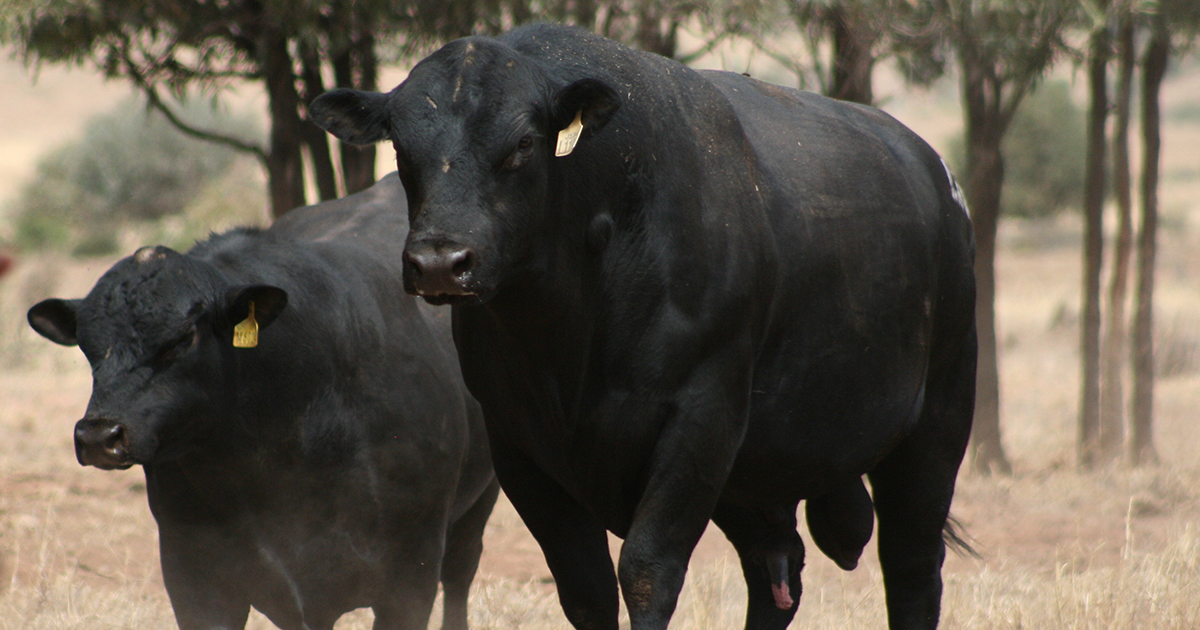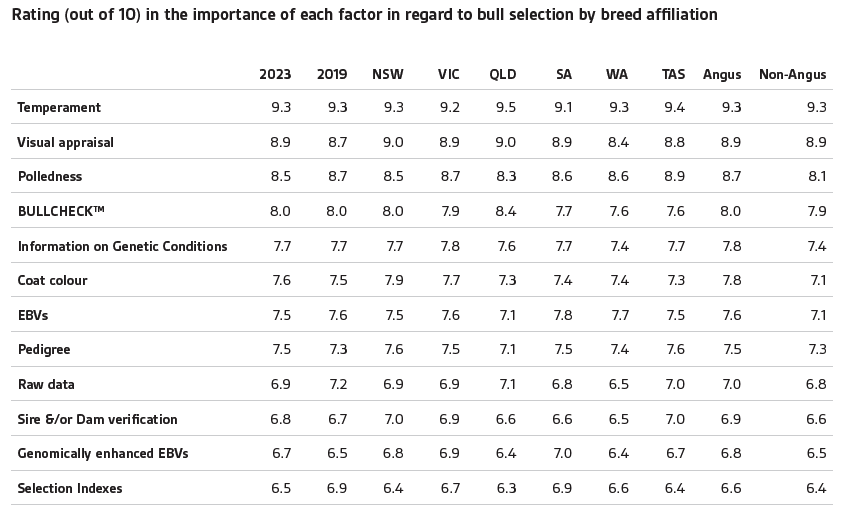Optimising bull selection for genetic improvement


Bulls are the cornerstone of any cow herd, siring hundreds of progeny throughout their lifetimes and leaving a lasting genetic legacy for future generations.
IMPORTANCE OF BULL SELECTION
Selecting the right Angus bull is crucial for enhancing productivity and profitability within a breeding operation. Therefore, making informed selections is essential for driving genetic improvement. This decision is best informed by a thorough understanding of the herd’s performance, target markets, and clearly defined breeding objectives, as well as a comprehensive grasp of the genetic differences among Angus bulls. Key considerations for bull selection include:
INSIGHTS FROM RECENT SURVEYS
To better understand the evolving attitudes of Australian beef producers toward genetic technologies, Angus Australia, in partnership with the MLA Donor Company (MDC), conducted surveys in 2019 and 2023. These surveys provided valuable insights into the criteria that influence bull selection among producers.
BULL BREED SELECTION

The surveys identified several critical factors driving the selection of bull breeds across different regions in Australia. The top three reasons that producers chose their respective bull breeds were:
Additionally, Angus Australia members highlighted the importance of good genetic information as a deciding factor, showcasing a commitment to leveraging genetic data in making more informed breeding decisions. Whilst non-breed society members were more likely to prioritise return on investment or growth rates.
BULL SELECTION
The surveys revealed that temperament continues to be the most significant trait in bull selection, maintaining its importance over the past five years.

There has been limited change in how producers rate the importance of bull selection criteria. Most notably, there has been a reduction in the use of raw data, which doe does not allow for accurate comparison of genetics, due to not eliminating the environmental influences on an animal’s performance. In contrast, an increase was observed in the use of genomically enhanced EBVs, which provide producers with the ability to make more informed selection decisions.

When delving into specific EBVs, producers ranked the following as the top three:
Among users of Angus genetics, IMF was deemed the most critical EBV, reflecting the breed’s focus on enhancing meat quality. Conversely, producers utilising non-Angus genetics placed a higher value on the Eye Muscle Area (EMA), indicating different priorities in muscle development and carcass traits.
Optimising Angus bull selection is essential for enhancing genetic improvement and profitability within breeding operations. Whilst survey responses are insightful into current key traits, producers are encouraged to ensure that they understand their herds current and future production targets and associated breeding objectives to ensure they are able to make informed breeding decisions.
KEY POINTS
If you wish to explore the data and findings further, the complete and summary reports are available below.